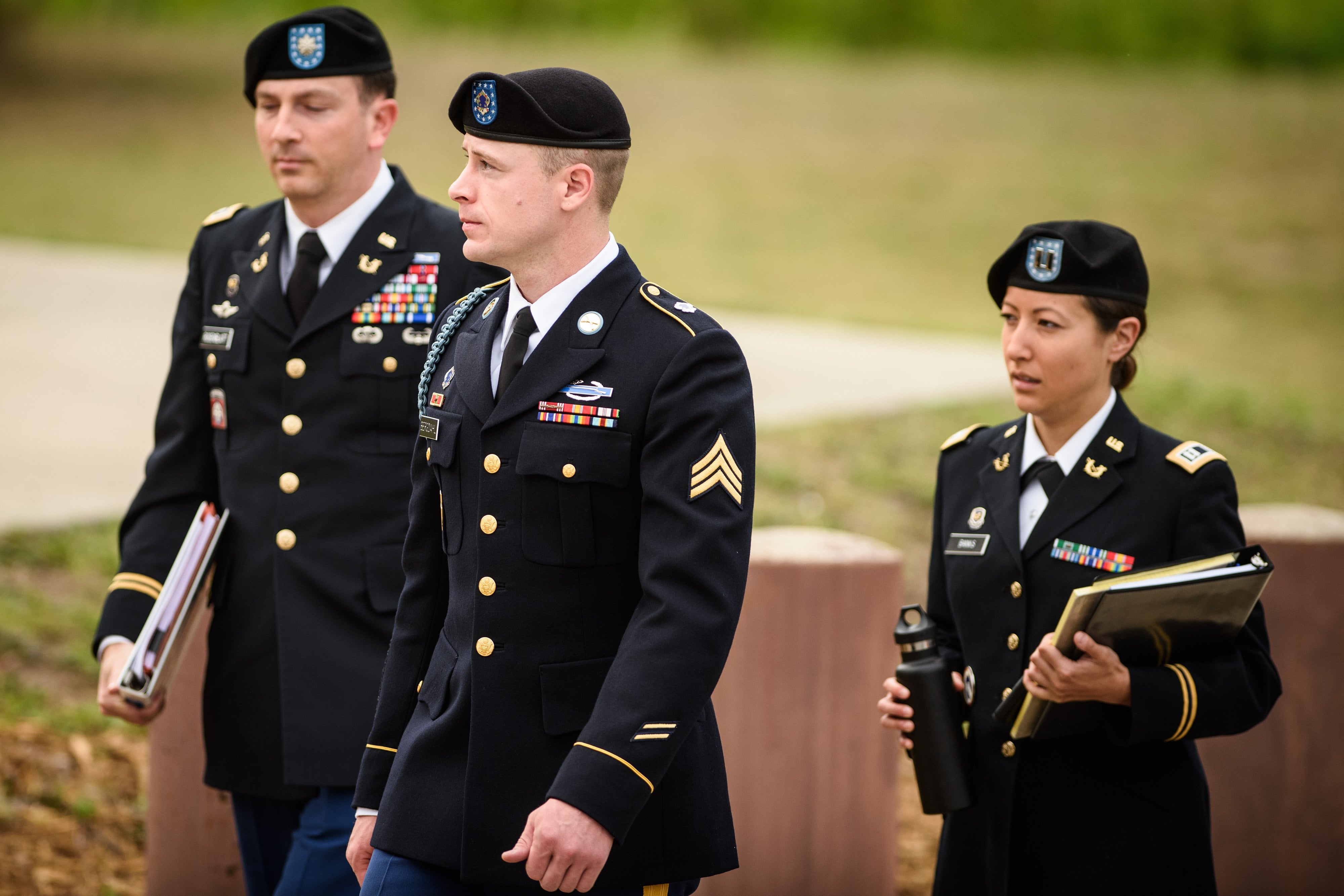The Department of Justice’s effort to clear the way for the federal government to resume capital punishment after a nearly two-decade pause won’t immediately change the individual statuses of those on the military’s death row, but some experts do view it as a potential sign of things to come.
There are currently four death row inmates in the military justice system: Ronald Gray, Hasan Akbar, Timothy Hennis and Nidal Hasan.
All are former soldiers.
In 2009, Nidal Hasan was an Army major when he killed 13 people and wounded more than 30 others in a mass shooting at Fort Hood, Texas.
“Attorney General [William] Barr’s announcement does not affect the individual status of any of the four death row inmates,” a Department of the Army official said on background. “The military will make an appropriate announcement if and when an execution date has been scheduled for any of our prisoners."
The new policy under the Trump administration clears the legal path to resume using lethal injection for federal death row inmates, which is also how the military would perform an execution. The policy switches away from a three-drug cocktail that was caught up in legal challenges to using a single drug — pentobarbital — to execute inmates.
Although the statuses of the four individuals on military death row are not likely to change anytime soon, the eagerness of President Donald Trump’s DOJ to change the status quo could bode badly for the death row inmates at U.S. Disciplinary Barracks, Fort Leavenworth, Kansas.
“If I were on death row, I would consider this a very bad sign, but not a sign that anything is happening immediately. There is going to be litigation over this," said Eugene Fidell, a Yale Law School lecturer on habeas corpus and military justice.
The military hasn’t executed a prisoner since 1961, though capital punishment remains a legal penalty under the Uniform Code of Military Justice.
Military death row was more populated in past decades, but legal challenges stemmed the number of occupants.
In the 1970s, capital punishment was invalidated by the Supreme Court, only to be later reinstated by that same legal body. And in 1983, the Armed Forces Court of Appeals also ruled the penalty unconstitutional, only to be again reinstated by an executive order from President Ronald Reagan the following year.
RELATED

Since then, more cases have wound their way toward and away from the death penalty.
“Some have gone away because of clemency, or errors found on appeal,” Fidell, who also served as a judge advocate in the Coast Guard, said. “So there’s been a lot of cases that have gone through the system, but the system does tend to winnow them out. And presidents have not fallen all over themselves to clear the path for executions.”
Retired Lt. Col. Jeffrey Addicott, a former Army judge advocate who tried a death penalty case that was ultimately commuted to life, said that he hopes the DOJ guidance signals a change on the military side.
“Hopefully it is a harbinger of things to come,” Addicott said. “Obviously the military appeal system is broken and hopefully the DOJ’s decision will energize a revamping of the military’s appeal process so that the victims can have justice.”
“Although the military rules of evidence are word for word the same as the federal rules of evidence, the military appeal system takes a somewhat different track than the Federal Court appeal system, but both ultimately merge together at the U.S. Supreme Court," he added.
As it stands, Ronald R. Gray, a former Army private convicted in 1988 of multiple murders and rapes, appears to be the closest to being put to death.
Gray was initially given an execution date in 2008 after then-President George W. Bush approved it, but a stay was granted less than a week afterwards. That stay of execution was lifted in 2016, but even he doesn’t face any immediate execution date.
Hasan, the Army psychiatrist who opened fire in a shooting rampage at Fort Hood, may also wait to learn of an outcome.
Hasan’s former defense lawyer, retired Col. John P. Galligan, told Army Times that they spoke last week on the day in which the new DOJ guidance was announced.
Galligan, a former Army judge advocate who still represents Hasan on some civil cases, said that his client could be affected by the new guidance, but there remain many avenues to appeal his sentence.
“[Hasan’s] case hasn’t even really gotten through the initial stages of the appeal,” Galligan said. “The case is still being litigated on post-trial discovery issues ... I think it’d be a long time before that [the death penalty] becomes one of the pertinent issues to be addressed on appeal.”
Hasan Akbar is another former soldier on death row. He was sentenced to death for a premeditated attack that killed an Army captain and an Air Force major early in the morning of March 23, 2003, at Camp Pennsylvania, Kuwait, at the start of the U.S. invasion of Iraq.
Also on death row is Timothy Hennis, a former master sergeant who was convicted and sentenced to death for the murders of a North Carolina woman and her two children in 1985.
Kyle Rempfer was an editor and reporter who has covered combat operations, criminal cases, foreign military assistance and training accidents. Before entering journalism, Kyle served in U.S. Air Force Special Tactics and deployed in 2014 to Paktika Province, Afghanistan, and Baghdad, Iraq.





